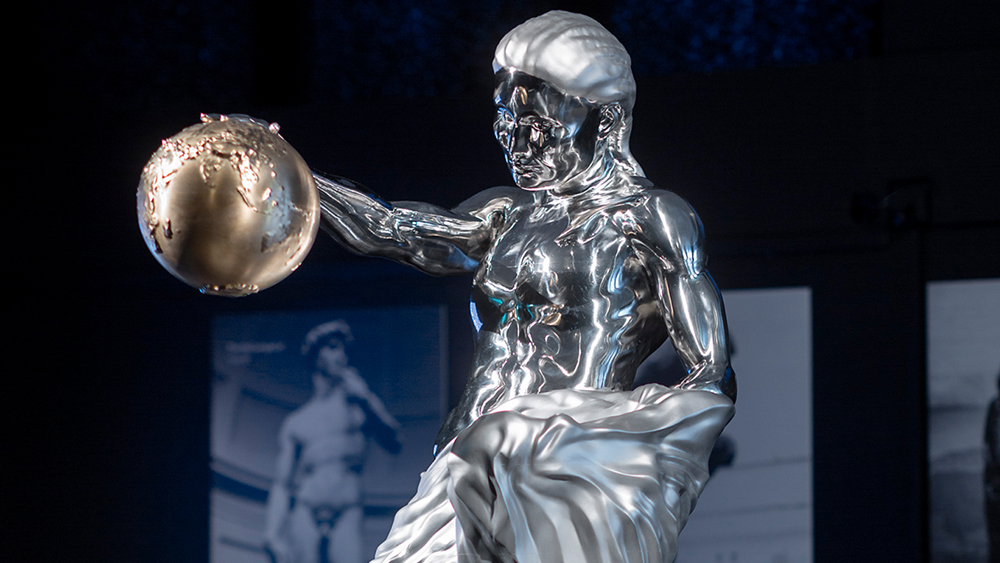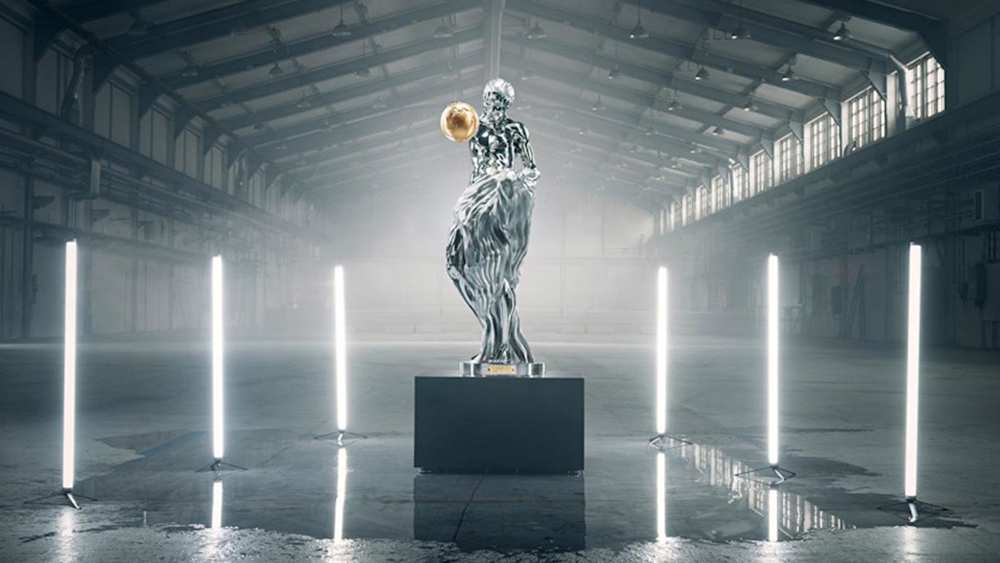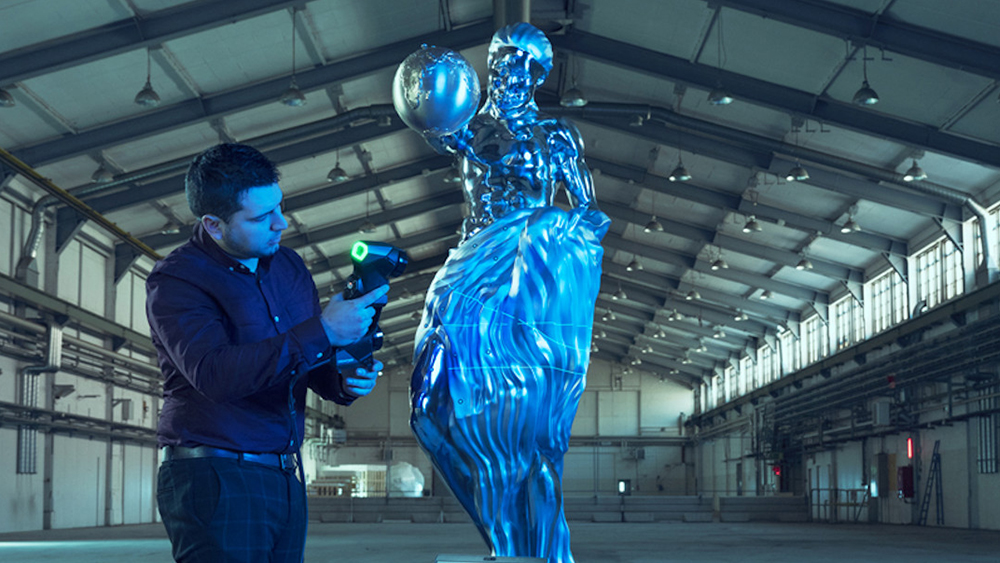
With the ever-encroaching advance of AI image generators, it was perhaps only a matter of time. But a museum in Sweden has marked a new milestone in AI art: the exhibition of what's described as the world's first AI-generated statue.
The statue on display at Stockholm's Tekniska was created using text prompts to combine elements of the work of Michelangelo, Rodin, Käthe Kollwitz, Takamura Kotaro and Augusta Savage. So why does it look like a garish oversized trophy of an awards event? (See our pick of the best AI art generators and the best AI art tutorials if you're exploring incorporating the tech into your own workflow).
Named The Impossible Statue, the work is a collaboration between a consultancy called The A.I. Framework and the engineering firm Sandvik to showcase the latter's computer-programmed manufacturing prowess. The five-foot stainless steel statue depicts an androgynous figure wrapped in a sheet of metal holding a globe.
Its creators used AI models to pick out key attributes from the work of five great sculptors: Michelangelo's asymmetrical 'contrapposto', Rodin's musculature, Käthe Kollwitz's expressionism, Takamura Kotaro's ability to capture movement and Augusta Savage’s defiance. They generated images over and over using three AI image generators – Stable Diffusion, DALL-E 2 and Midjourney – until they got a result they were happy with.
After that, they converted the 2D image into a 3D model using depth-estimator software and human pose estimation. They ran digital simulations of the manufacturing process and refined them to reduce the amount of steel used to nine million polygons to make the finished piece.


Can any of the influence of the master sculptors' work be seen in the final piece? Perhaps. It's certainly muscular, but I'm not seeing any of the suffering or social commentary of Kollwitz and Savage. Since the project is more about showcasing technology than telling a story or conveying emotion through art, the piece feels rather shallow and soulless, like a glitzy trophy.
Peter Skogh, director of the Tekniska, described the piece as "a great example of what the combination of modern technology and human brilliance can create." He said: “Our mission is to create a broader understanding of the possibilities of technology and to stimulate the next generation. This project is ticking all the boxes for us.”
For your own 3D work, see our pick of the best 3D modelling software.







